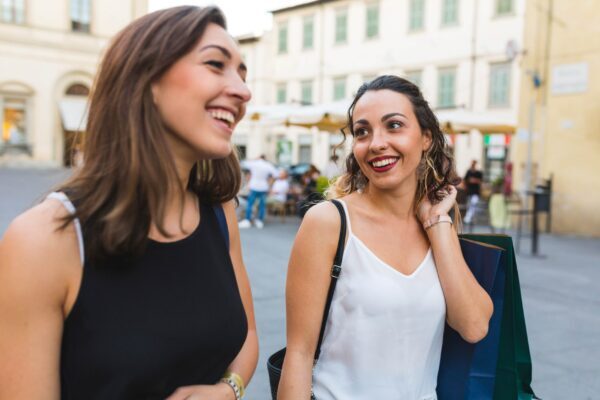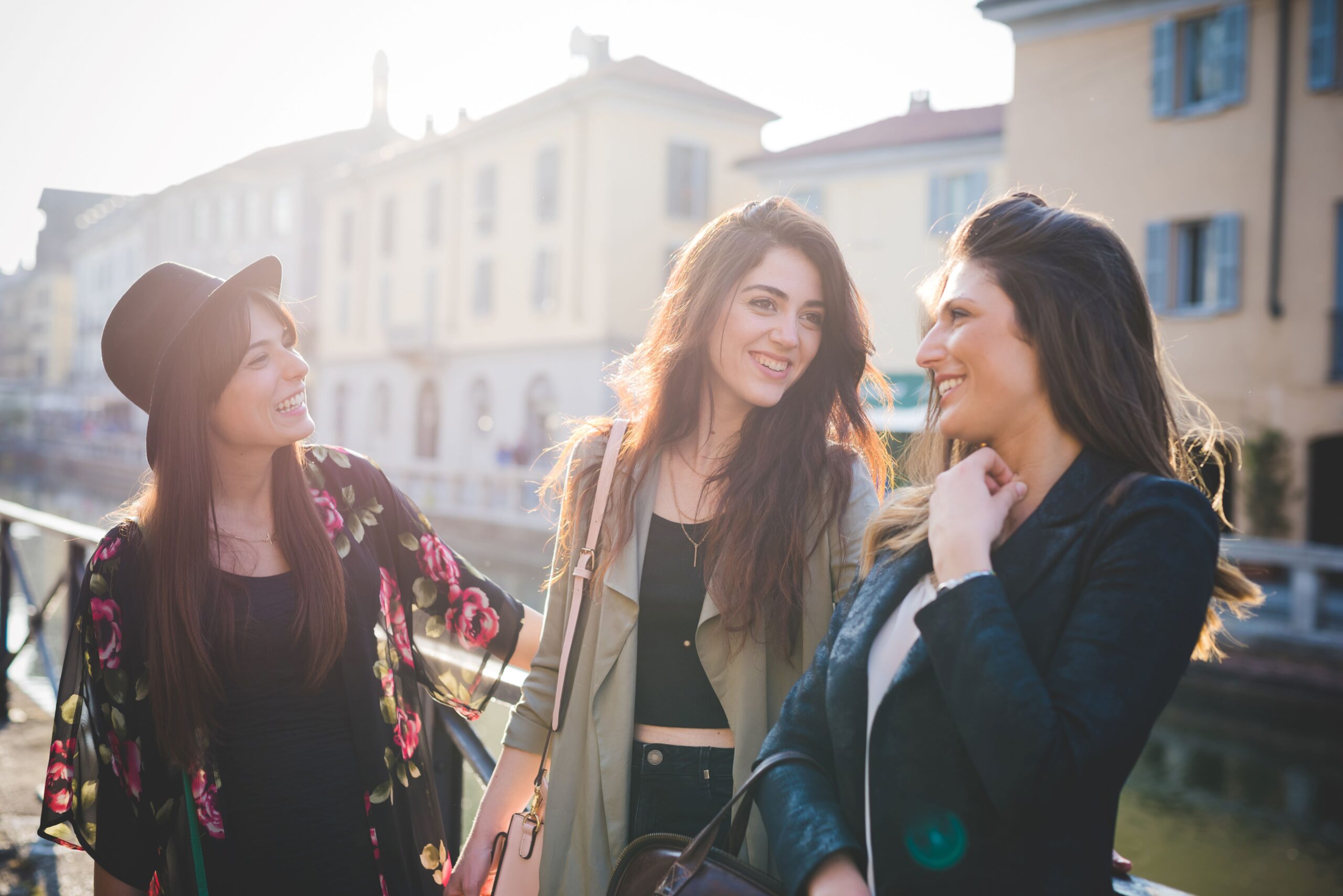
Milán tiene un lugar que no se puede confundir con ningún otro punto del mapa. No lo señalan letreros luminosos ni escaparates atractivos. Pero mujeres de diferentes generaciones se sienten atraídas por este lugar, como por una llamada invisible. Estamos hablando de la Librería de las Mujeres, un espacio donde quienes aún recuerdan las reuniones callejeras de los años setenta se sientan a la misma mesa con quienes han acudido porque algo en su interior les dice que este es el lugar para plantearse preguntas importantes e intentar responderlas.
Aquí nació la idea de una película, para quienes desde hace tiempo sienten que la historia del movimiento feminista no es solo una lucha por la igualdad. Para quienes quieren entender de dónde viene la libertad y cómo puede ser el deseo cuando no viene de fuera. Las participantes en el proyecto son Lia Chigarini, Luisa Muraro, Manuela Vigoria y Flaminia Cardini. Cada una de ellas ha vivido esta historia a través de su cuerpo y sus palabras. Decidieron devolver el movimiento a quienes no lo conocían.
El documental La política del deseo intenta mostrar cómo piensan las mujeres que han elegido no seguir a los demás, sino crear sus propios significados. De esto habla Luisa Muraro. La cámara lo muestra, pasando de una heroína a otra, de Milán a Barcelona.
Hoy, cuando incluso las acciones feministas más impactantes se reducen a estadísticas, es esencial escuchar otra voz. Una que hable del trabajo interior, del diálogo sin fin y del deseo que no necesita aprobación. Y esta voz llega desde la pantalla.
Cómo las feministas italianas reinventaron la vida
Primero aparece en pantalla Laura Milani. Habla con calma y su voz suena como una invitación a conversar. Junto a ella están Laura Colombo y Sara Gandini. Tienen cuarenta y tantos años. No estuvieron allí al comienzo del movimiento, pero lo abrazaron como parte de sus vidas. Trabajan con archivos, dirigen una página web de una librería y recopilan cartas y textos. En lugar de protestas ruidosas, eligieron preservar la memoria. Cada una de ellas cree que las palabras pueden cambiar a las personas.
Tras ellas, vemos a Daniela Pellegrini. Lleva el pelo gris recogido en un moño. Habla con confianza. En 1962, creó el primer grupo en Milán en el que las mujeres comenzaron a debatir sobre lo que significa ser ellas mismas. En aquella época, la palabra «feminismo» rara vez se oía en la televisión. Ahora, Daniela ha reabierto un lugar de encuentro donde se reúnen mujeres de diferentes generaciones. Huele a café, hay fotografías en las paredes y estanterías con libros en una esquina.
Un poco más tarde entra en escena Lia Cigarini. Su nombre se ha convertido en un símbolo. Junto con otras mujeres, fundó la Librería de las Mujeres de Milán. Lia escribe, habla y reúne a su alrededor a quienes buscan respuestas. Hay mucho silencio y significado en sus palabras. Cada paso hacia uno mismo requiere fuerza. Cuando una mujer encuentra su voz, esto repercute en la sociedad. Lia comparte esta fuerza con otras personas.
Junto a ella está Luisa Muraro. Su tono es suave, pero sus ideas suenan como un manifiesto. Habla con calma. Sus libros se leen en Italia, Cataluña, España y América Latina. Luisa cree que la diferencia entre mujeres y hombres crea la base para un nuevo lenguaje. Para que ese lenguaje surja, las mujeres están aprendiendo a escucharse a sí mismas, a discutir lo esencial y a compartir sus experiencias.
Lugares para mujeres
En Milán, en una calle modesta, se reúne cada semana un grupo de personas. No tienen un orden estricto, ni un líder, ni una estructura fija. En su lugar, surge una conversación entre ellas. Es abierta, animada y está conectada con la experiencia personal y el momento presente. Las participantes la consideran una fuente de cambio. Influye en cómo las mujeres estructuran su vida cotidiana, con quiénes dialogan y qué palabras eligen. Aquí, entre las estanterías, nació la idea de la película.
Al principio, la idea se percibió como arriesgada. Había poca confianza en que la película pudiera transmitir la experiencia femenina sin el conjunto habitual de personajes, conflictos y triunfo final. Pero los directores se embarcaron en el viaje. Pidieron a las mujeres que les contaran cómo había sucedido todo. ¿Cómo se sintió una mujer cuando decidió por primera vez decir algo importante para ella? ¿Qué sucedió en el momento en que otra mujer escuchó esas palabras y respondió?
Durante el rodaje, el equipo recopiló más de 200 horas de material de vídeo. Esto se convirtió en un mapa detallado de la presencia de las mujeres. El viaje, parada a parada, abrió espacios llenos de significado. En estos lugares estaba ocurriendo algo más que simples reuniones.
Estos espacios:
- Permitían a las personas hablar por iniciativa propia
- Mantenían vivos los recuerdos
- Unían generaciones a través de la comunicación
- Creaban un lenguaje que surgía de una voz específica
Todos los lugares, desde Cicip y Ciciap hasta la Librería de Mujeres, se convirtieron en un escenario para la acción. Aquí se formó la práctica política, expresada a través de la respuesta. Aquí nacieron nuevas palabras, que reflejaban la experiencia y el sonido del presente.
La película surgió de estos lugares y de estas mujeres. Nos recordó que la política puede significar presencia, una forma de estar con los demás sin dejar de ser uno mismo.
La película Politics of Desire muestra cómo las mujeres crean un espacio para una nueva política a través de la experiencia personal, la atención a las palabras y el respeto por la diferencia. En estos encuentros nace un lenguaje en el que se puede escuchar lo más importante: la libertad comienza donde una mujer habla por sí misma.
